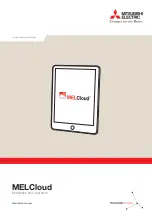
MG7540 Cable Modem User Manual
32
7223#term mon
The CMTS is now configured to accept RIPv2 messages. If the CM/RG is registered
on the CMTS, you should see messages that are similar to the message below:
00:28:41: RIP: received packet with MD5 authentication
00:28:41: RIP: received v2 update from 10.24.81.148 on Cable2/0
00:28:41: 10.24.81.0/24 via 10.24.81.148 in 1 hops
The CM/RG has broadcast that is connected to the network 10.24.81.0/24 through
the interface 10.24.81.148. This information is not very useful to the CMTS because it
already knows that the network 10.24.81.0/24 is connected directly to one of its
interfaces (Cable2/0). It ignores this message and doesn’t add any information to the
IP routing table. Here is the IP routing table after the CMTS has received RIPv2
messages:
7223#sh ip route
Codes: C - connected, S - static, I - IGRP, R - RIP, M - mobile, B - BGP
D - EIGRP, EX - EIGRP external, O - OSPF, IA - OSPF inter area
N1 - OSPF NSSA external type 1, N2 - OSPF NSSA external type 2
E1 - OSPF external type 1, E2 - OSPF external type 2, E - EGP
i - IS-IS, L1 - IS-IS level-1, L2 - IS-IS level-2, ia - IS-IS inter area
* - candidate default, U - per-user static route, o - ODR
P - periodic downloaded static route
Gateway of last resort is 10.24.95.17 to network 0.0.0.0
10.0.0.0/8 is variably subnetted, 3 subnets, 2 masks
C 10.24.80.0/24 is directly connected, Cable2/0
C 10.24.81.0/24 is directly connected, Cable2/0
C 10.24.95.16/28 is directly connected, FastEthernet0/0
S* 0.0.0.0/0 [1/0] via 10.24.95.17
In the example above, the CM/RG was set up to send RIPv2 messages to the CMTS.
The CMTS was also set up to receive these messages.
5.3.8
DMZ Host
Choose
Advanced Router
> DMZ Host
to display the following page.
















































